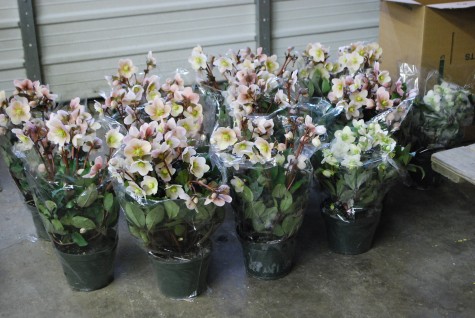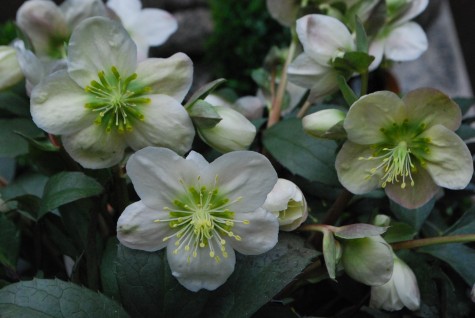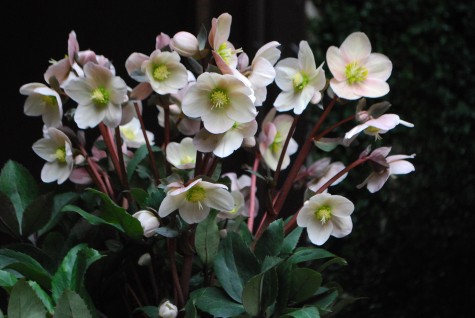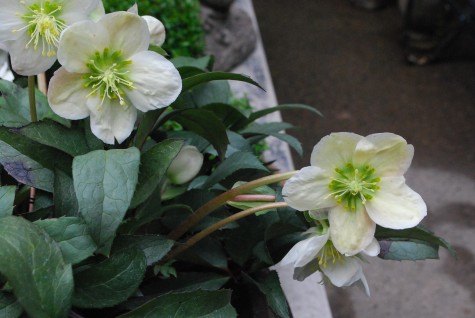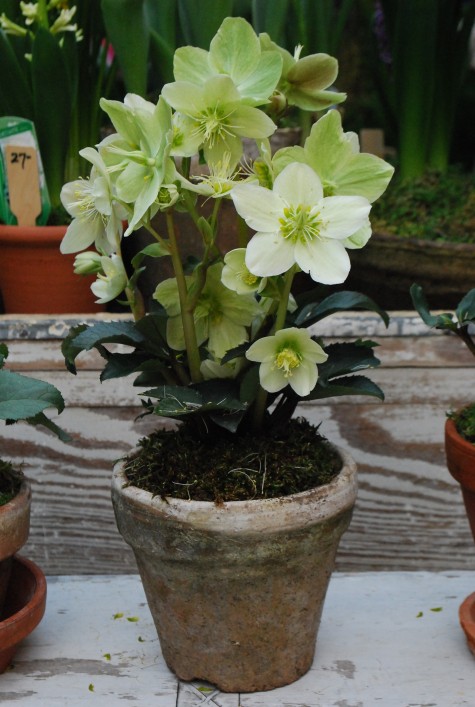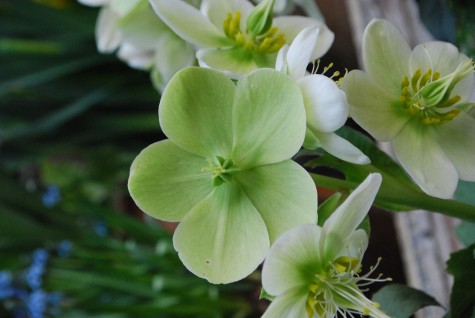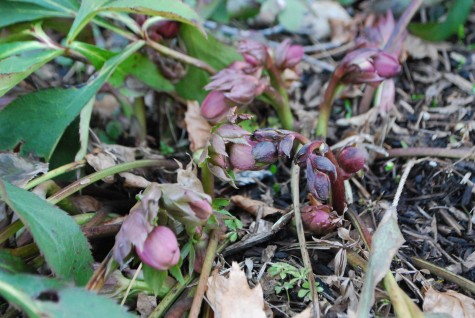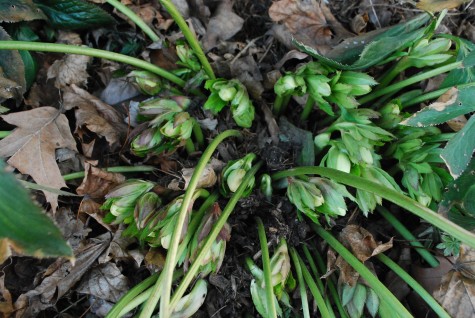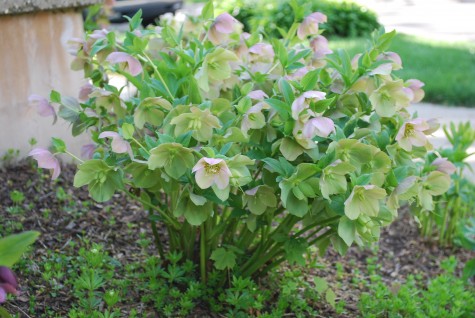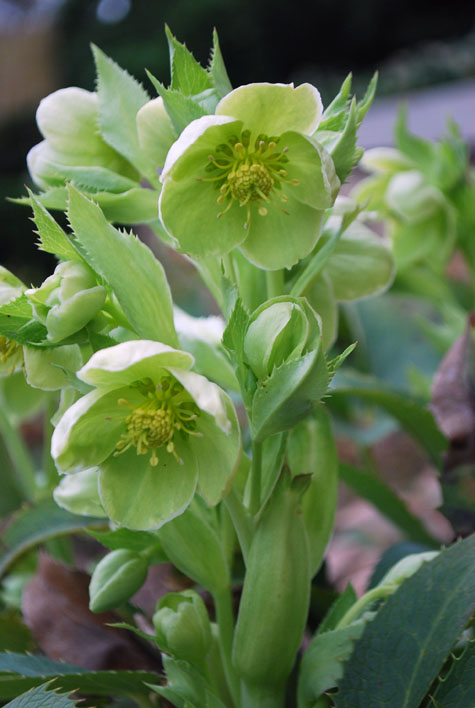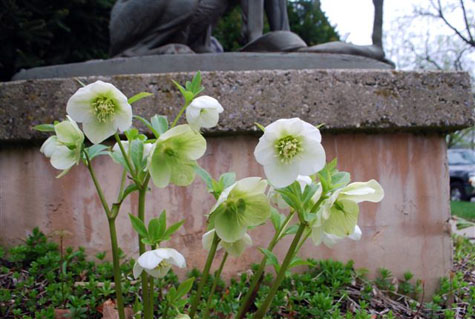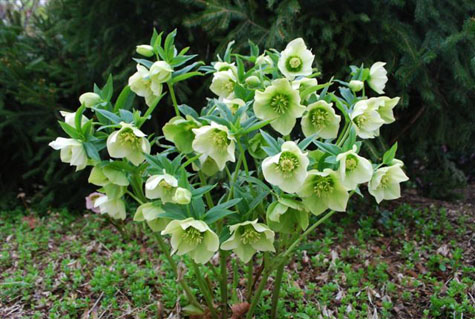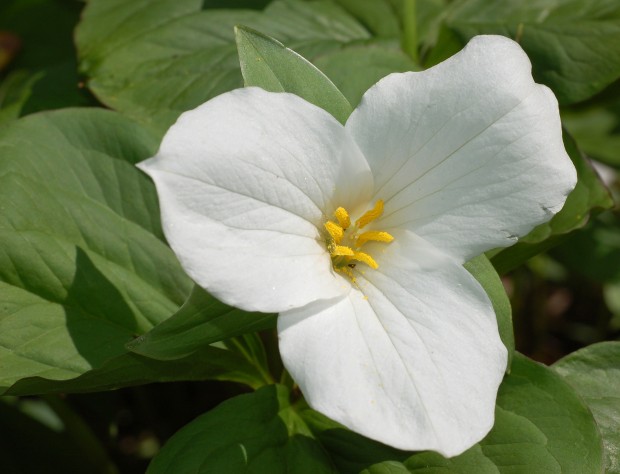 Has the thought of spring crossed my mind yet? Oh yes. The fierce cold, the heavy snow and the ice of the past 3 weeks has made it easy to daydream about spring. Better than 30 years ago I was able one October to buy five acres of rolling land (burdened with an utterly dysfunctional house) blessed with a substantial stand of trillium grandiflorum – the native Michigan trillium. I was not expecting them, but in late April, there they were. I was enchanted. The three lobed flowers are almost as large as the leaves-showy. The trillium blooming provoked an interest in Michigan wildflowers.
Has the thought of spring crossed my mind yet? Oh yes. The fierce cold, the heavy snow and the ice of the past 3 weeks has made it easy to daydream about spring. Better than 30 years ago I was able one October to buy five acres of rolling land (burdened with an utterly dysfunctional house) blessed with a substantial stand of trillium grandiflorum – the native Michigan trillium. I was not expecting them, but in late April, there they were. I was enchanted. The three lobed flowers are almost as large as the leaves-showy. The trillium blooming provoked an interest in Michigan wildflowers.
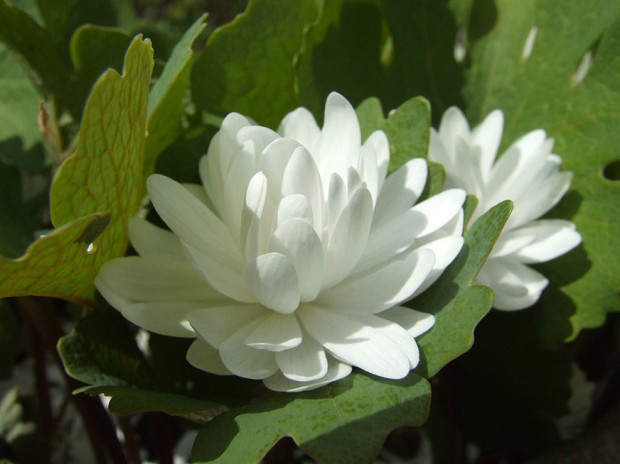 Over a period of years, I added lots of other wild flowers to that spot. I would guess it was 2500 square feet or so, dominated by a few old ash and locust trees. The ground had not be disturbed for many years, or had any of the leaves been removed. But for the tree roots, one could dig in this compost based soil with 2 fingers. The double bloodroot pictures above from Wikimedia never made large colonies, but what I had was persistent. The main trick was to check the plants as often as possible once they come in to bud. Any warm weather or wind, and the petals would drop. Looking every bit like a cross between a miniature peony and a waterlily, they might be in bloom but a few hours a year.
Over a period of years, I added lots of other wild flowers to that spot. I would guess it was 2500 square feet or so, dominated by a few old ash and locust trees. The ground had not be disturbed for many years, or had any of the leaves been removed. But for the tree roots, one could dig in this compost based soil with 2 fingers. The double bloodroot pictures above from Wikimedia never made large colonies, but what I had was persistent. The main trick was to check the plants as often as possible once they come in to bud. Any warm weather or wind, and the petals would drop. Looking every bit like a cross between a miniature peony and a waterlily, they might be in bloom but a few hours a year.
I did spend a few years working for Francis Hughes in the late 70’s and early 80’s. His nursery was unusual, in that he sold native wildflowers dug from his own extensive gardens. One plant which I especially admired was anemone nemerosa. I can still remember him digging me a small start from which he shook off all of the soil. He made a point of telling customers that he did not sell his soil. I was sure my unceremoniously bare rooted plant would not survive, but this plant and many others did indeed grow. The cultivar “Vestal”, pictured above courtesy of www.collectorsnursery.com, is a hybrid noted for its prominent anemone center.
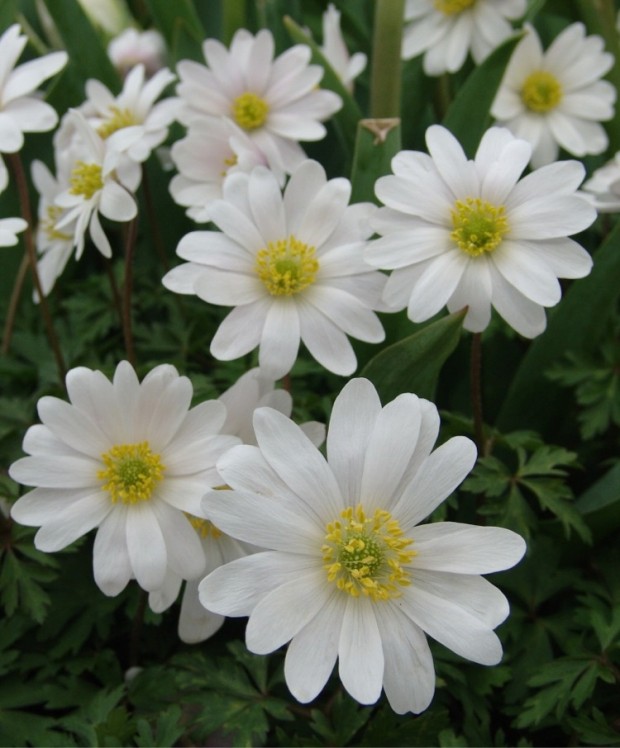
anemone blanda is is not native to Michigan, but its white flowers come early in the spring. The small corms are planted in the fall. I soak the dark brown nuggets for 24 hours before planting them 2-3 inches below ground. The 6 inch tall plants will readily colonize large areas – even weedy or grassy areas – if they are happy. The purple and pink varieties are lovely, but I love the white the best. A few hundred bulbs planted in the untended remains of an orchard multiplied many times over. This picture is from John Sheepers bulbs.
 White epimedium, a perennial groundcover, spreads more slowly and blooms later than other species, but it is well worth the trouble. They are tolerant of dry shade, which makes them an ideal addition to a wild flower garden with mature trees. They bloom on foot tall slender stalks, the new foliage coming after the flowers. This picture- from www.plantsnouveau.com.
White epimedium, a perennial groundcover, spreads more slowly and blooms later than other species, but it is well worth the trouble. They are tolerant of dry shade, which makes them an ideal addition to a wild flower garden with mature trees. They bloom on foot tall slender stalks, the new foliage coming after the flowers. This picture- from www.plantsnouveau.com.
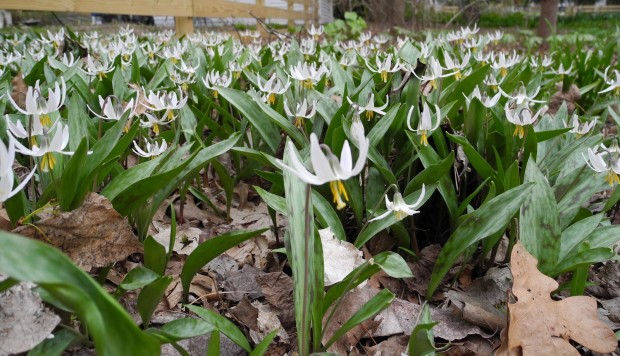 The yellow species trout lily is a familiar face in the Michigan spring wildflower garden, but the white epimedium conalba “Alabaster” is strikingly beautiful. They are fairly easy to grow, but can take years to flower. They are well worth the wait. Like many other wildflowers, the plants go entirely dormant once the trees get their leaves, and the rain is less reliable. Wild flowers are frequently referred to as garden ephemerals, as their dormant season comes early in the summer. The photograph above is from www.phytofactor.fieldofscience.com.
The yellow species trout lily is a familiar face in the Michigan spring wildflower garden, but the white epimedium conalba “Alabaster” is strikingly beautiful. They are fairly easy to grow, but can take years to flower. They are well worth the wait. Like many other wildflowers, the plants go entirely dormant once the trees get their leaves, and the rain is less reliable. Wild flowers are frequently referred to as garden ephemerals, as their dormant season comes early in the summer. The photograph above is from www.phytofactor.fieldofscience.com.
 Dodecatheon media is commonly referred to as shooting star. This is a good description for these diminutive flowers with extremely reflexed petals. The foliage is lettuce-lush and juicy looking. They are easy to grow, and will colonize readily when happy. This picture is from www.mtcubacenter.org.
Dodecatheon media is commonly referred to as shooting star. This is a good description for these diminutive flowers with extremely reflexed petals. The foliage is lettuce-lush and juicy looking. They are easy to grow, and will colonize readily when happy. This picture is from www.mtcubacenter.org.
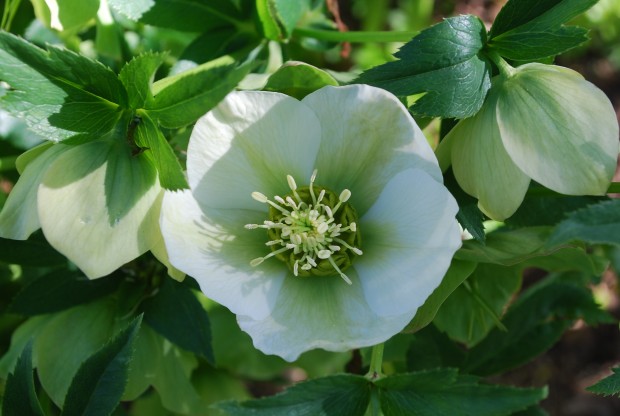 Hellebores are not naive, or are they wild flowers. They are perennials with mostly evergreen foliage. But no discussion of white flowers in early spring would be complete without them. Helleborus orientalis is commonly known as the Lenten rose, as it blooms at that time of year. They are one of my favorite perennials, as they are as beautiful in leaf as they are in flower. There are numerous cultivars, each one more lovely than the last.
Hellebores are not naive, or are they wild flowers. They are perennials with mostly evergreen foliage. But no discussion of white flowers in early spring would be complete without them. Helleborus orientalis is commonly known as the Lenten rose, as it blooms at that time of year. They are one of my favorite perennials, as they are as beautiful in leaf as they are in flower. There are numerous cultivars, each one more lovely than the last.
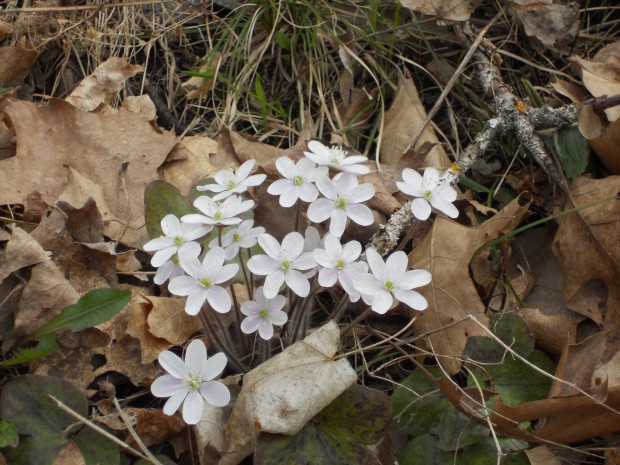 For whatever reason, hepatica was always my favorite spring wildflower. The area where I lived 30 years ago was decidedly rural, but on the cusp of development. Whole neighborhoods full of homes were built nearby, after the land was scraped clean of any and every plant. I dug many a clump of hepatica out of the way of a bulldozer, and relocated them to my property. With a little oak leaf mold, and slightly swampy conditions, they were very happy. I like to believe they are still thriving from benign neglect in those spots, as I know that garden has not been touched by the owner who came after me. This photograph via www.pickerelhills.com.
For whatever reason, hepatica was always my favorite spring wildflower. The area where I lived 30 years ago was decidedly rural, but on the cusp of development. Whole neighborhoods full of homes were built nearby, after the land was scraped clean of any and every plant. I dug many a clump of hepatica out of the way of a bulldozer, and relocated them to my property. With a little oak leaf mold, and slightly swampy conditions, they were very happy. I like to believe they are still thriving from benign neglect in those spots, as I know that garden has not been touched by the owner who came after me. This photograph via www.pickerelhills.com.
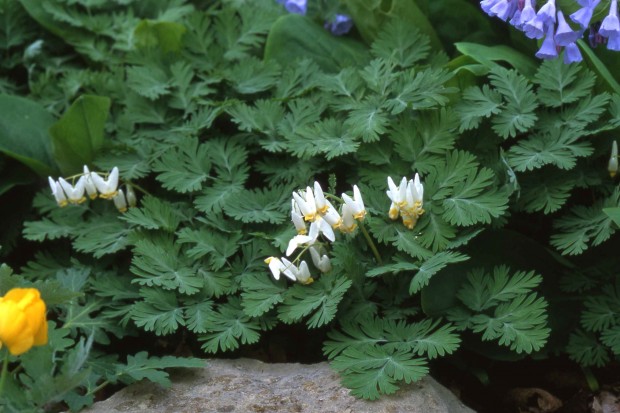 Dutchman’s Breeches are a wilding bleeding heart. The plants feature serrated blue green leaves in profusion. The bleeding hearts are arranged all along a small arching stem. They were very shy bloomers for me. Charming, these.
Dutchman’s Breeches are a wilding bleeding heart. The plants feature serrated blue green leaves in profusion. The bleeding hearts are arranged all along a small arching stem. They were very shy bloomers for me. Charming, these.
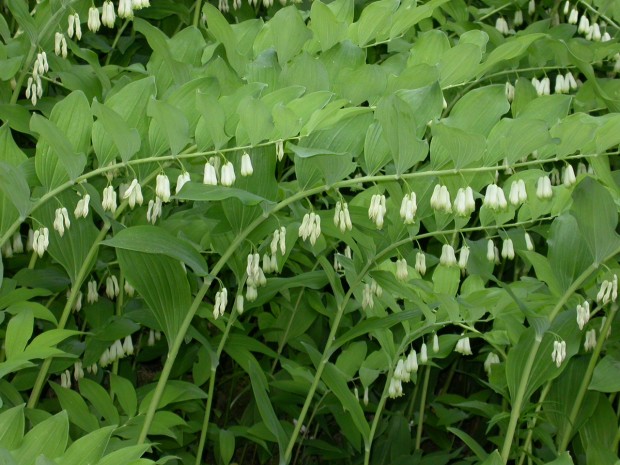 Solomon’s Seal has a similar arrangement of individual blooms. The foliage is also arranged along the stem. The plant is quite tall, and vigorous. Some gardeners prefer the variety sporting white variegated leaves, but I have always liked the more subtle species. I found this great picture at www.solomonsseal.wordpress.com.
Solomon’s Seal has a similar arrangement of individual blooms. The foliage is also arranged along the stem. The plant is quite tall, and vigorous. Some gardeners prefer the variety sporting white variegated leaves, but I have always liked the more subtle species. I found this great picture at www.solomonsseal.wordpress.com.
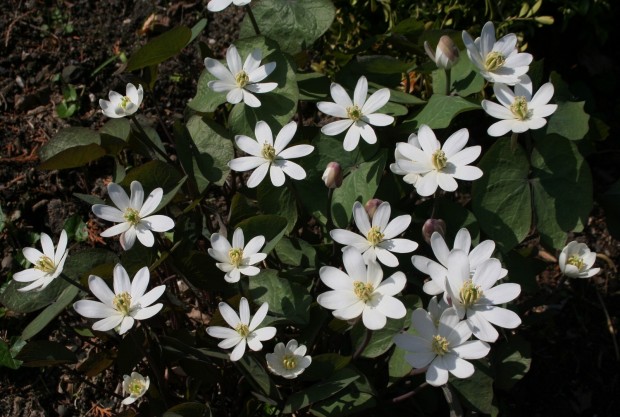 Jeffersonia Diphylla is commonly known as twin leaf. Though this picture does not do justice to the leaf structure, what appears to be 2 leaves at the end of a leaf stalk is actually one leaf, deeply divided. This wildflower was named in honor of Thomas Jefferson by his friend and fellow botanist William Bartram. Only one other species of Jeffersonia is known, and it is native to Japan. Why that would be, I have no idea. This photograph is from www.urvforum.be.
Jeffersonia Diphylla is commonly known as twin leaf. Though this picture does not do justice to the leaf structure, what appears to be 2 leaves at the end of a leaf stalk is actually one leaf, deeply divided. This wildflower was named in honor of Thomas Jefferson by his friend and fellow botanist William Bartram. Only one other species of Jeffersonia is known, and it is native to Japan. Why that would be, I have no idea. This photograph is from www.urvforum.be.
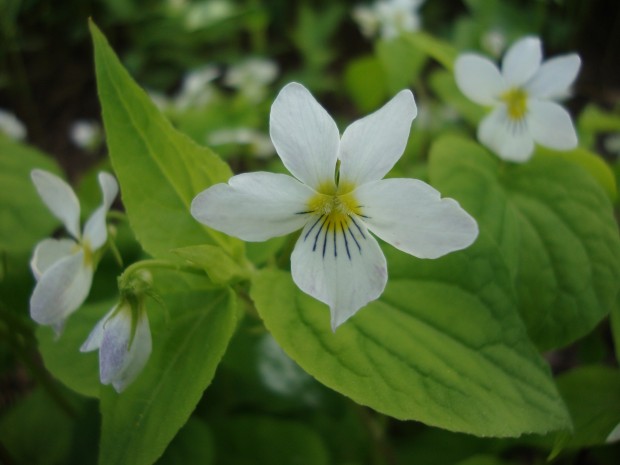 Last but not least, Viola Canadensis, the Canada violet. They are quite rare in some places they are known to be native, but they grew vigorously for me. All of the violets were willing and able to cover the ground. Once the wildflowers went dormant, there were plenty of violets covering the ground. Sweet, that. Very sweet to think that a lot will be happening in the garden in the not so distant future.
Last but not least, Viola Canadensis, the Canada violet. They are quite rare in some places they are known to be native, but they grew vigorously for me. All of the violets were willing and able to cover the ground. Once the wildflowers went dormant, there were plenty of violets covering the ground. Sweet, that. Very sweet to think that a lot will be happening in the garden in the not so distant future.

